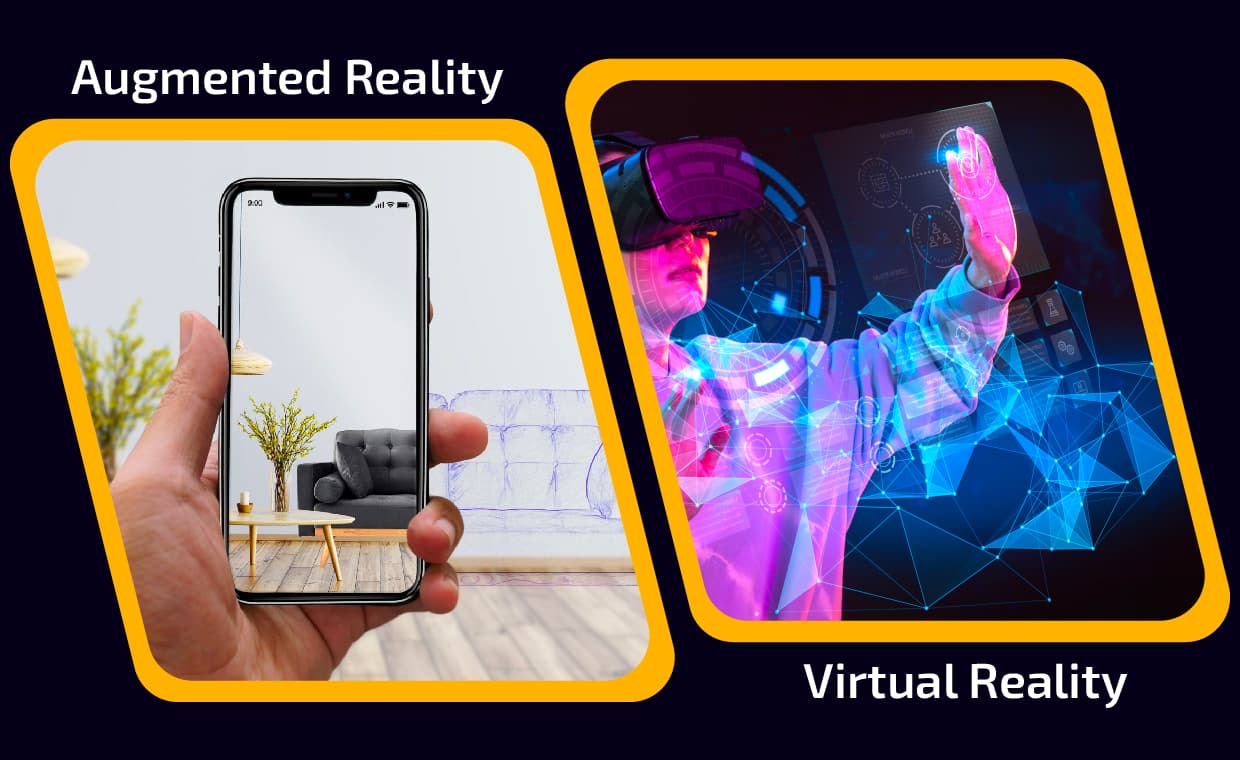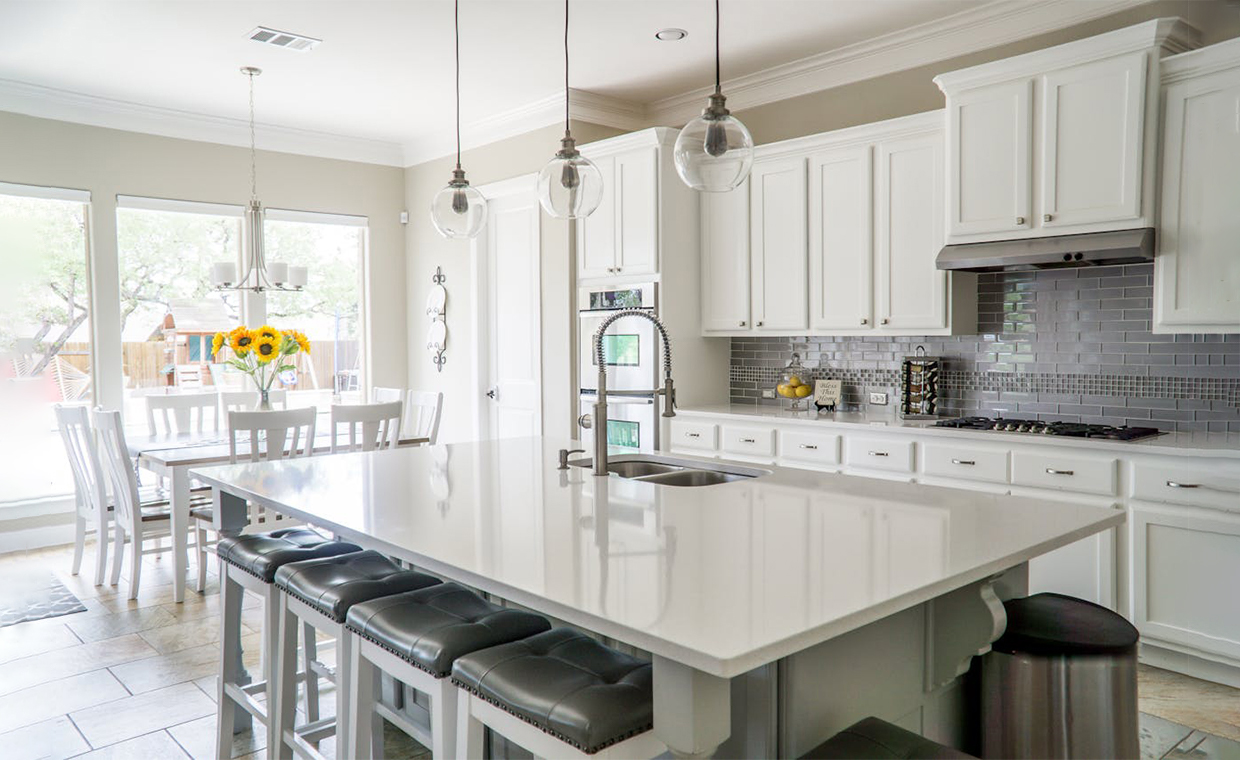
Architecture transforms ideas into reality through stages like concept, design development, working drawings, and 3D visualisations. Advancements in technology have evolved tools and processes, questioning if traditional methods of architecture are compatible in the revolutionary age of Augmented Reality and Virtual Reality in Architecture, Engineering, and Construction, also known as AR and VR in AEC industry.
In the competitive architecture industry, winning clients and efficiently delivering visions is crucial. Designers must convey ideas visually and imaginatively to clients and users. AR and VR are bridging this gap, making architectural representations easier and more conducive. Augmented Reality and Virtual reality enable real-time communication and monitoring of construction progress, regardless of physical barriers.
What is Augmented Reality (AR) and Virtual Reality (VR)?


Let’s first begin with what Augmented Reality (AR) and Virtual Reality (VR) means. Talking about Augmented Reality (AR), it expands your surrounding by adding digital elements to a live view with the help of a camera or a smartphone. Virtual reality (VR) as the name suggests is a complete immersive experience that replaces a real-life environment with a stimulated one. It removes the real world and isolates the user like the one we see in video games.
Evolution of VR in Architecture

The use of virtual reality in architecture has proven to be profitable as it reduces the time, effort, and cost involved in making physical models, 3D visualisations, and renders. It is offering designers a realistic insight into the design before the built form comes into existence. A survey revealed that 70% of firms in the AEC industry have adopted AR and VR in some form or another.
According to a survey conducted by CGarchitect, 40% of the architectural firms in Europe, and 21% in the USA make use of virtual reality in design processes. Another set of data suggests that out of the global users of virtual reality, 22% comprise architectural firms. Thus, data evidently showcases that VR, over time, is making its presence felt in the architecture and design industry.
How AEC Sector Uses AR and VR?
Virtual Tours i.e. Walkthroughs

Virtual tours with the help of walkthroughs provided by AR and VR helps to visualise the project if you cannot travel to the construction site. Architects can provide 3D models and immersive experiences for clients in a timely manner.
Sustainable Models

The deteriorating environmental conditions are a major cause of concern for architects, who must hence consider the effects of climate change in their designs. VR visualises sustainable designs and enables environmental conditions. It is a unique opportunity to visualise how future generations will live and see the level of energy efficiency of the buildings.
Prototype Creation

AR and VR in architecture enable the transformation of CAD models into augmented reality scenes. This allows architects to merge 3D building models with the real world. Furthermore, all the project members can access this visualisation instantly.
Real Time Visualization

Augmented reality in AEC industry allows seeing what the project would look like by virtually adding elements in real life. The visualisation through AR saves time and money, while providing greater security to both the architects, clients, and builders while interacting for a construction project. Hence, it allows precise adjustments without waiting for the finished structure.
The Impact of AR and VR in AEC Industry

But why just AR and VR? If there are innumerable technologies out there that can be used, then why has only virtual reality gathered such a huge response?
Let’s have a look at the seamless features of AR and VR in AEC industry, virtual reality that makes it the most sought-after technological innovation in architecture and design:
01. Client Experience

The core focus of the architecture and design genre lies in curating experiences for users and clients that are seamless and conducive. Virtual reality helps in offering this conducive and realistic experience to the users or clients by means of its immersive 3D experience even before the project is built. The immersive virtual environment that AR and VR help create is real to scale and details are real to experience making the design process much more realistic and transparent, thereby building trust among the clients in the design. This in a way offers a better understanding of the design scheme, aiding in enhanced decision-making on the clients’ as well as on the designer’s end. This further helps project management professionals to build a much more streamlined pipeline for construction and business processes, thus, making timelines more realistic and execution much more accurate. This also leads to the prevention of last-minute on-site changes, thereby bridging the gap between the design and on-site reality.
Virtual reality thus enhances the design capability to communicate and interact with the users, rendering more depth and meaning to the concept and design processes. Therefore, it helps to build an accurate picture of the scheme right from the pitch stage, making the client experience seamless.
02. Enhanced Collaboration

Virtual reality can make pivotal differences in terms of aligning teams and detailing processes. It helps with orienting all the stakeholders involved in the project, such as the contractors, engineers, and designers, to be on the same page. It helps multiple stakeholders to coordinate and visualise the design more efficiently.
Generally, different stakeholders might have a different understanding of processes. Furthermore, it is insufficient to communicate the design processes only through site visits, renderings, and 2D drawings.
With virtual reality in the picture, this process becomes streamlined as every stakeholder can experience the spatial quality accurately and align the processes accordingly. Furthermore, real-time modeling tools aid in the addition of all stakeholder’s queries and concerns, making design resolutions and changes more transparent and efficient. Thus, building information modeling through AR and VR helps efficient integration of design information, making collaboration more effective.
03. Business Growth
Virtual Reality is bringing revolutionary growth to the architecture, engineering, and construction industries. It has dissolved the physical barriers, making it possible to carry out design processes across borders with the same intensity and effective communication. This has opened avenues for businesses to stay connected and track design as well as construction processes without having to be physically present at the site.
Moreover, the efficiency of VR tools has reduced the time spent on recording design queries and acting upon them. The real-time co-ordination has led to real-time problem-solving irrespective of the different time zones of the stakeholders. Thus, the integration of VR into design processes has led to the opening of new opportunities for design firms to carry out businesses across borders.
04. Making Pivotal Difference through VR
The world of virtual reality and its association with architecture and design can be a bit intimidating initially, but its enormous benefits are making it a part of the industry. Architectural firms that intend to make a difference are adapting to the use of virtual reality in AEC industry on a large scale as this innovative technology is making a huge difference in architectural presentations.
Here’s a list of some tools and software that are helping architects in their presentations:
- ARki
- Unreal Engine
- Storyboard VR
- Augment
- Pair
- Matterport
- Enscape, etc.
Examples of Firms using VR in Architectural Design
VR is redefining the future of design through its involvement in design collaboration and execution. Here are some examples of leading firms around the globe that have chosen to make this shift in business through VR technology.
01. Utile , Canada
Canada-based architectural firm Utile, which focuses on student housing and apartments, is known to use VR technology during the planning phase to collect feedback and during the lease phase to showcase the space to customers.
02. Ennead Architects, New York
New York’s Ennead Architects use VR technology to colour-code data and spaces and use it in design discussions with clients.
03. WHA Architecture, United States
WHA, a USA-based firm employs Virtual Reality for visualization and identifying issues in construction before the project is built. Moreover, it also helps them save on construction costs and eliminate the need for models.
04. Zyeta, India
India’s leading workplace design and strategy firms make use of VR and AR for tracking projects, mapping the progress on site, and designing communication to clients and stakeholders efficiently.
All in All
On a final note, we hope we got you covered on the impact of AR and VR in AEC industry. Virtual reality technology thus aids in developing and optimising the design process by setting realistic depictions of aspects of space such as light, shadow, materials, depth, volume, etc. Virtual reality in architecture is thus a stepping stone to making design and construction realistic, efficient, and much more business oriented.
Image Courtesy : Image 2, Image 3, Image 5
Author Bio
Sudarshan Uppunda – Born & brought up in Bombay, based in Bengaluru, Sudarshan is an ambivert who can be outgoing-open and reserved at the same time. It all depends on the vibes! He deeply believes in vibes and personal energies. As an Architectural Journalist and Architect, he aims to write in a way that his content is relatable for all. Design is what interests him the most and he keeps trying his hand at different design verticals such as graphic, UI & UX design at times. He likes to write and explore varied topics on Workplace environments, Architecture, and Culture. He is quite active in architectural content writing and has written for various platforms like RTF, The Arch Insider, etc. He strongly believes that whatever one does in life, one must do it with passion & be happy with it.






























